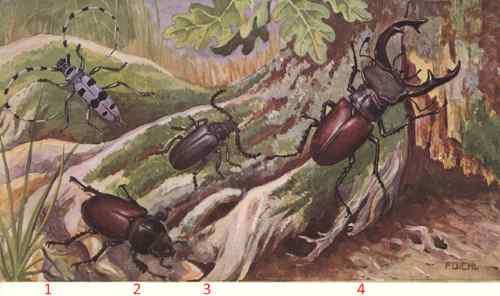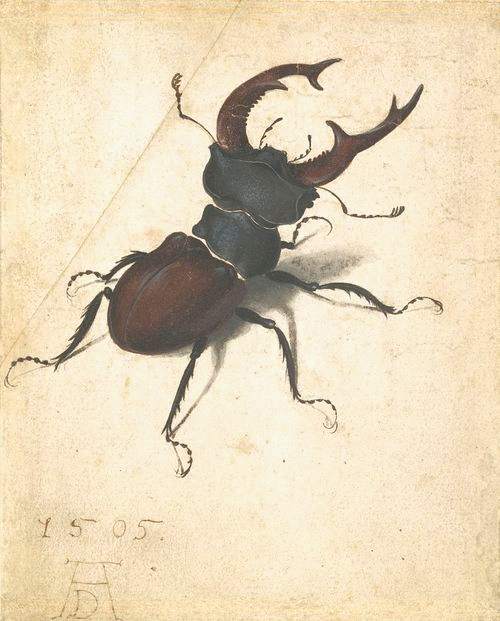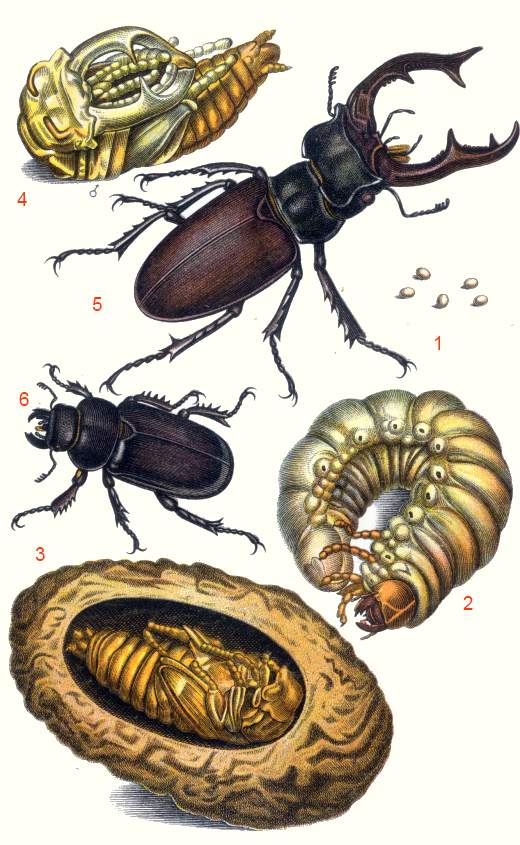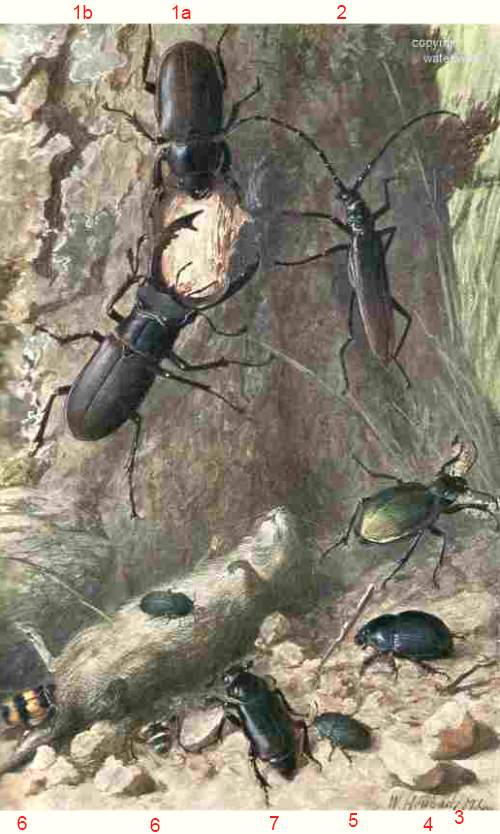the stag beetle
This is a large beetle that has fangs, the large mandibles are only found on the males and resemble the antlers of stags.
the stag of the stag beetle
The male use these mandible mainly to fight with other males. From a distance it looks like wrestling in slow motion. The mandibles are used to push the opponent male. The winner mates with the female. These females give the males a bit of a sugary liquid, as a reward after the mating .

1 Rosalia longicorn or Rosalia alpina 2,4stag beetle 3 "the tanner" or "the sawyer" or Prionus coriarius
the stag beetle male
The stag beetle male can't use there fangs for other purposes: it is not well known how this large beetle feeds: it feeds on rotting fruits , but its hard to believe that is enough to keep alive. The male stag beetle has many enemies, mostly birds, especially the European magpie. This bird is fond of the stag beetle and has an easy prey: the stag beetle is a slow, noisy and clumsy flier.
the stag beetle larva
The larva feeds on decaying wood, living about one decimeter below the surface. It is capable to remain in the ground for 8 years.
the female stag beetle
Much smaller than the male, and it has a pair of stong mandibles, that is uses to feed : it crushes the bark of trees to feed on the fluid streams of the tree. Don't pick up these female stag beetles, as they are very capable of defending thereselves: with a bite of these mandibles they are easy capable of inflicting a painfull wound.
the stag beetle enemies
Magpie an d other birds are big enemies, and there is also a habitat loss Road traffic is also a threat. The female has the habit to warm up on the black asphalt, and the draw of car headlights had led them in lumbering flight directly into the path of oncoming vehicles, unable to escape as they are clumsy fliers.
 The stag beetle, an illustration made by Albert Durer.
The stag beetle, an illustration made by Albert Durer.
Locanus cervus or stag beetle. 1 eggs
2 larvae
3 pupae male
4 pupae female
5 male
6 female

"inlandsche kevers", an illustration from "Schmeil, leerboek der dierkunde", 1911
1 stag beetle 1afemale,1b ,male
2 great capricorn beetle or Cerambyx cerdo
3 Calosoma sycophanta or forest caterpillar hunter
4 Dung beetle
5 May bug
6 Nicrophorus vespillo or burying beetle
7 Nicrophorus germanicus or burying beetle

Cerambycidae; also known as long-horned beetles or longicorns and stagbeetles
source : natuurgenot, wandeltochten L.G.Lutz, 1901
1 Red Kite or Milvus milvus
2 Great Spotted Woodpecker or Dendrocopos major
3 Tawny Owl or Brown Owl or Strix aluco
4 Stag beetle, male or Lucanus Cervus
5 European Red-bellied Clerid or European Bark-beetle destroyer with larva or Thanasimus formicarius
6 spanish fly Lytta resinctoria
7 oak leaf roller weevil or Attelabus nitens
8 hazel leaf-roller or Byctiscus betulae
9 Poplar-and-willow borer or Cryptorhynchus lapathi
10 wasp beetle or Clytus arietis
11 acorn weevil or Curculio glandium
12 acorn weevil or Curculio venosus.
13 Graet capricorn or Cerambyx cerdo
14 small poplar borer or Saperda populnea
15 Veranderlijke schijfboktor of collidium variabele
